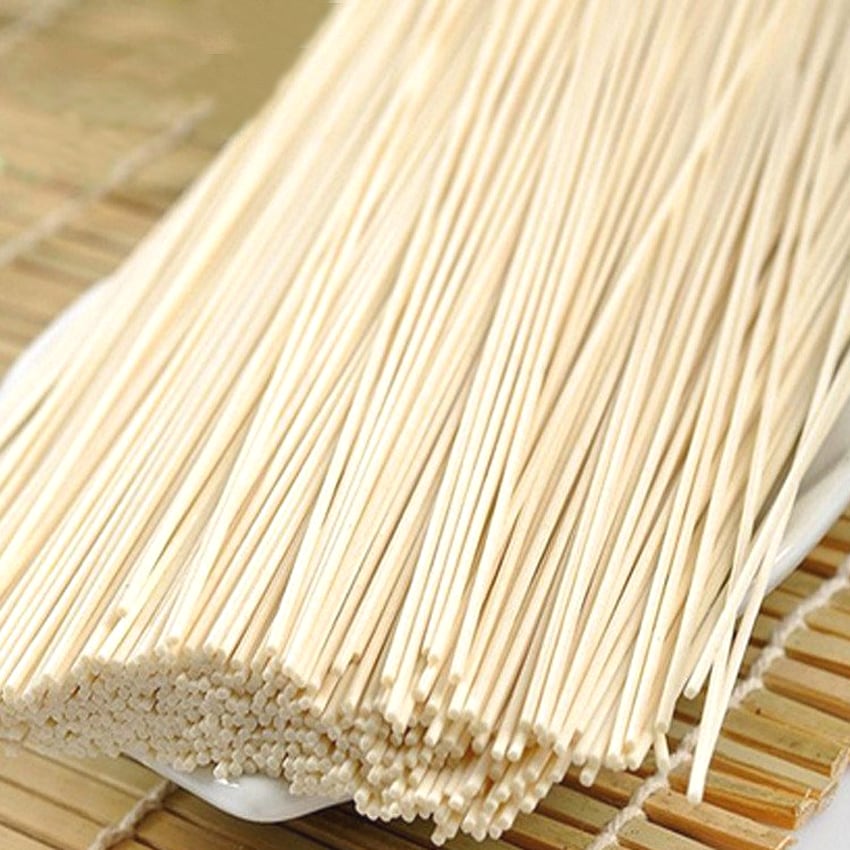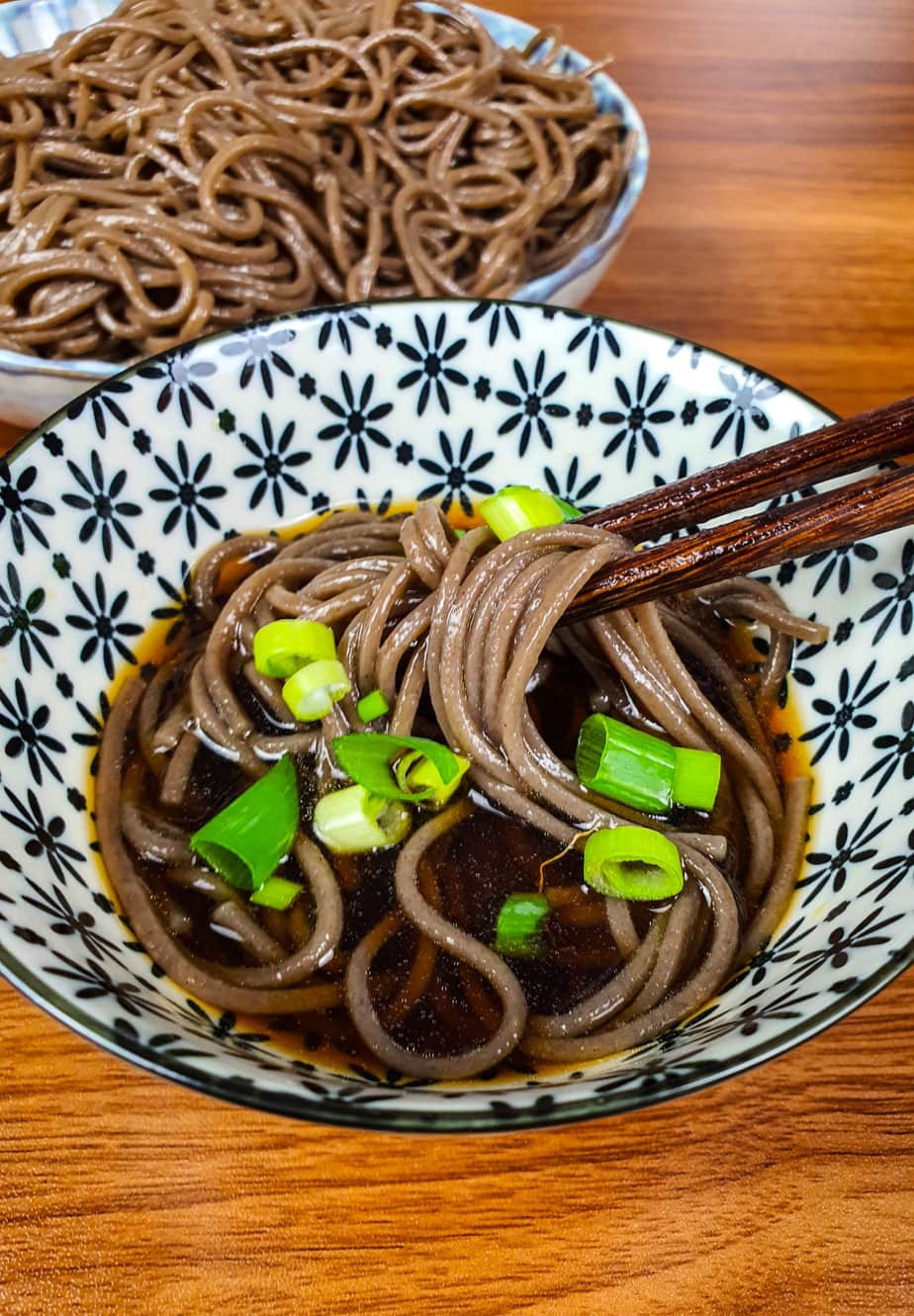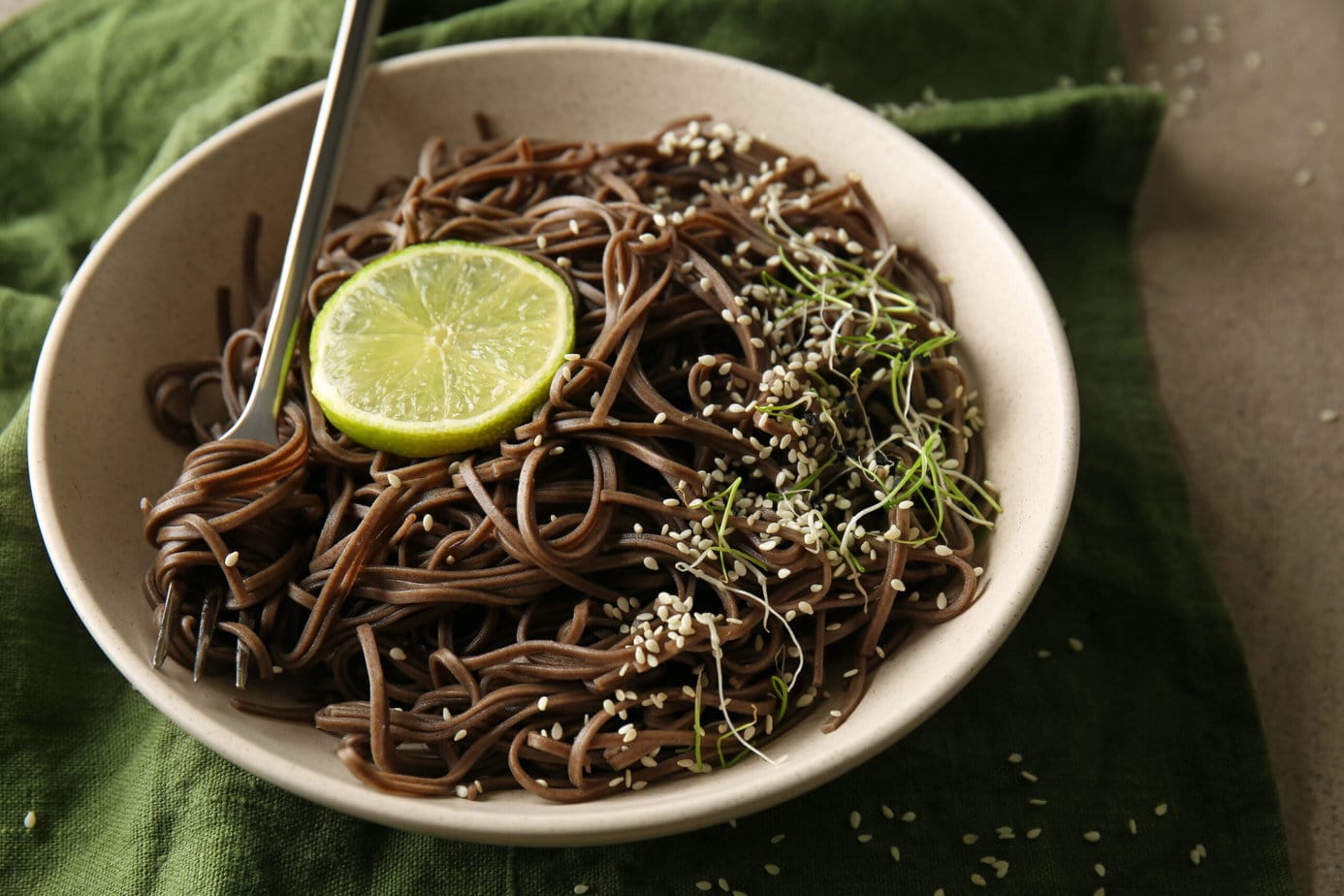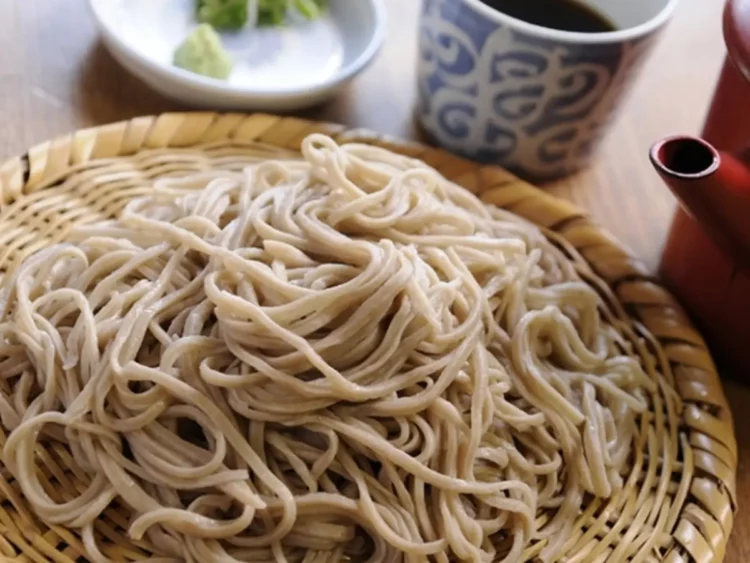What are soba noodles?
Soba are noodles used in Japanese cuisine. They’re fairly thin and a dusky brown, thanks to their main ingredient: buckwheat flour.
Most versions also include a little wheat flour and water, while more elaborate ones can feature more specific ingredients such as matcha powder or seaweed. Visually, they resemble whole-wheat spaghetti, but the flavor is entirely different.
The history of soba noodles
The origins of soba noodles date back to the Middle Ages. Even then, Zen Buddhist monks practiced long fasts, sometimes lasting more than ten days. Just before beginning these periods of privation and meditation, they would eat small balls of dough made by mixing water with buckwheat flour.
It was also a monk (named Shoichi-Kokushi) who introduced to these temples the distinctive cutting techniques used for soba. Even today, soba is appreciated by monks because it doesn’t leave the body feeling heavy or tired. Soba noodles are also a traditional New Year’s dish.
The difference between soba and somen noodles
It’s true that soba and somen noodles are quite similar—and not just in name. They’re of similar thickness, and both can be served cold in a broth…
But in practice, they’re two different noodles. You can tell them apart mainly by appearance: somen, made entirely from wheat flour, lacks the darker color typical of soba and its buckwheat base.

Somen noodles also contain a bit of vegetable oil, which you won’t find in soba, whose only liquid is water.
How to cook soba noodles?
There are two ways to enjoy soba: cold or hot (lukewarm isn’t great…). In both cases, cook the noodles first. Simply drop them into boiling water for 2 minutes 30 seconds. Like spaghetti, but quicker!
For the chilled version, ideal in summer, try this recipe for a cold soba dipping sauce. All the details are in the article, but in short: cook the noodles, cool them immediately in cold water or ice, and serve in a bowl with chopped green onions, all in the sauce made with soy sauce and mirin. The ultimate touch: add a splash of dashi broth!
For the hot version, more typical of fall and winter, serve your cooked soba in a dashi broth. Choose the classic dashi with kombu and dried bonito—it’s the best! For a more indulgent bowl, add fried tofu or crisp bits of tempura batter…

What do soba noodles taste like?
You’ll need to enjoy buckwheat, of course. Soba has that telltale nutty, earthy flavor—you can taste the grain right away. The noodles have a fairly dense, slightly grainy, pleasantly chewy texture.
Where to buy soba noodles?
Today, the simplest option is to buy your soba noodles online on Amazon. For the most authentic experience, pick them up from Japanese grocers. You’ll find soba in most Japanese and Asian grocery stores.
With a bit of luck, you might even find them in the Asian aisle of large supermarkets!
The different kinds of soba noodles
The varieties of soba you’re likely to encounter in your culinary explorations come in several tempting forms:
- Juwari Soba/Towari Soba: A delicacy in the soba family, made with 100% buckwheat flour. These noodles are renowned for their firm texture and distinctive flavor that showcases buckwheat’s depth. Soba enthusiasts love this version for its purity and authentic taste.
- Nihachi Soba: This version blends flours for a unique balance of texture and flavor. It contains 80% buckwheat flour for that characteristic taste, while 20% wheat flour adds elasticity and tenderness. It’s a versatile choice that works in many dishes.
- Cha Soba: A creative twist that incorporates matcha into the dough. Matcha, a finely ground green tea powder, lends the noodles a vibrant green color and delicate tea notes. The rustic flavors of buckwheat mingle with the fresh, herbaceous nuances of matcha. These noodles are often served cold and are especially welcome in hot summer months.
Each of these soba types offers a distinct culinary experience, highlighting the many ways buckwheat can become exquisite, flavorful noodle dishes. Whether you’re a purist seeking pure buckwheat flavor or you like to experiment with combinations, there’s a soba that will delight your taste buds.
What is sobayu?
Sobayu (蕎麦湯) literally means “soba cooking water,” the hot water in which soba noodles have been boiled.
It’s typically served in a teapot at the end of a soba meal and can be sipped as is, like tea, or added to the remaining sauce to make a comforting soup that wraps up the meal.
How to store soba noodles?
Most often, if you have soba left over, it’s because you didn’t cook the whole package. When dry, soba stores like any dried pasta: keep it in a cool, dry place.
Ideally, use it within a year of purchase. If fresh but uncooked, consume the remaining soba within three days of purchase, and store it in the refrigerator.
Do soba noodles contain gluten?
You might think they don’t, since soba is made from buckwheat flour, but in reality some soba contains a bit of gluten because many varieties also include some wheat flour.
Without gluten, soba noodles would be very brittle and wouldn’t hold together. If you avoid gluten, look for soba made with 100% buckwheat flour—it’s naturally gluten-free.

Ingredients
- 250 g dry soba noodles
- 40 g sesame oil
- 3 tablespoons light soy sauce
- 2 tablespoons sugar
- 2 tablespoons rice vinegar
- 2 tablespoons sesame seeds black or white
- 2 green onions thinly sliced
- 1 clove grated garlic
Optional garnishes
- 0.25 teaspoon black pepper
- thinly sliced radishes
- chopped cilantro
Instructions
Cook the soba noodles
- Fill a large pot with about 3 liters of water and bring to a boil over high heat. There’s no need to salt the water. Cover the pot to help it come to a boil faster.
- When boiling, add the soba noodles and cook for 4 minutes, stirring frequently with a large fork so they don’t clump together or stick to the bottom of the pot.250 g dry soba noodles
- Drain in a colander set in the sink and rinse immediately under cold running water until cool to the touch. Leave the colander in the sink to drain well.
Meanwhile, make the dressing:
- In a large bowl, whisk together the sesame oil, soy sauce, sugar, rice vinegar, sesame seeds, green onions, garlic, and black pepper until combined.40 g sesame oil, 3 tablespoons light soy sauce, 2 tablespoons sugar, 2 tablespoons rice vinegar, 2 tablespoons sesame seeds, 2 green onions, 1 clove grated garlic, 0.25 teaspoon black pepper
Finish the noodles:
- Tap the colander firmly against the sink several times to remove as much water as possible. Pour the noodles over the dressing and use a fork to toss until evenly coated. Serve at room temperature, or chill until ready to serve.

